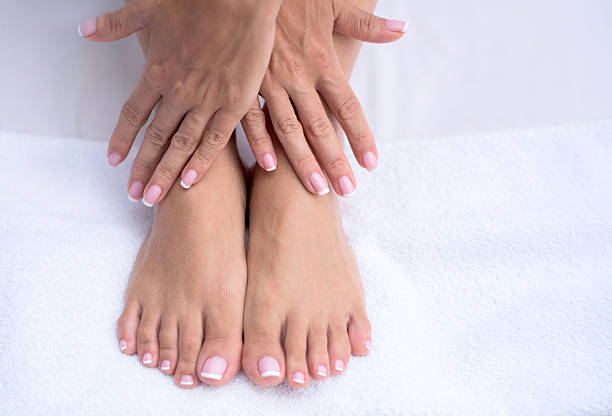How to Get Rid of an Ingrown Toenail

Having an ingrown toenail can be painful. This condition causes pain and swelling because the toenail digs into the skin. It can also cause infection. You may also notice pus, red streaks leading to the toe, and a fever. There are several ways to treat this condition, including OTC pain relievers and a visit to a doctor.
Soaking your feet in warm saltwater is a quick and effective ingrown toenail treatment. This method will help soften the nail tissue and reduce inflammation. You can also apply Epsom salt to the affected toe. You can also use warm water mixed with 1/4 cup of apple cider vinegar to help relieve the pain.
Soaking the affected foot in warm soapy water is another quick way to treat ingrown toenails. You can also apply a topical antibiotic cream. You should apply the cream to the tender area three times daily. You can also use petroleum jelly to bandage the toe.
You should also use a nonsteroidal anti-inflammatory drug to reduce the inflammation in your toe. You should also massage the skin on the side of the nail. This will help prevent the nail from growing into the skin.
You can also soak your foot in warm water and Epsom salt. You should try to soak your foot for at least 20 minutes. After soaking, dry the foot thoroughly. If you have a severe case of ingrown toenail, you may need to have the nail bed removed. This will help prevent the nail from regrowing in the nail bed.
Another way to treat an ingrown toenail is to use an antibiotic ointment. The doctor may prescribe a corticosteroid cream to help reduce the inflammation. Oral antibiotics may also be necessary. You should also consider seeing a podiatry Midland specialist to treat the infection.
You should also avoid using sharp instruments to treat ingrown toenails. In addition, avoid cutting the nail too short. Leaving a notch in the side of the nail is also risky. You should also try to wear shoes that are comfortable and roomy. You should also avoid wearing socks with a tight fit. You should also try to wear open toed shoes whenever possible.
If you have diabetes, it is best to seek the advice of a foot specialist. You should also wear moisture-wicking socks. Wear loose-fitting shoes and socks to help prevent ingrown toenails. If your toes are numb, you should see a doctor as well.
You can also use dental floss or cotton under the ingrown toenail. You can also use a small piece of cotton to lift the ingrown nail out of the skin. You should change the cotton after a few days to prevent infection.
Soaking your feet in warm water can also relieve pain and swelling. You should also apply a topical antibiotic cream to the affected toe. You should apply the cream to the tender surface three times daily. You may also use oral antibiotics for more severe cases of ingrown toenail.
